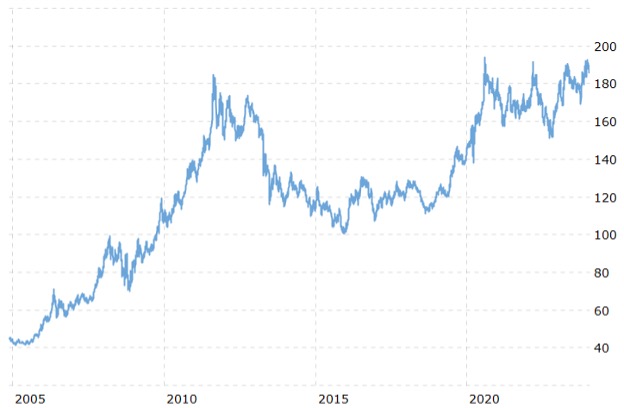Why Spot Bitcoin ETFs Are a Game Changer
After years of regulatory twists and turns — and a fortune in lawyer fees — the first spot bitcoin ETFs that actually “hold” the cryptocurrency have launched in the U.S.
Spot bitcoin ETFs have been called the holy grail for the crypto industry because they potentially open up bitcoin to all kinds of new investors. Bitcoin now also enjoys the halo effect of the ETF structure backed by large and well-known asset managers.
For the ETF industry, though, spot bitcoin ETFs appear to offer plenty of risks as well as opportunities. On one hand, spot bitcoin ETFs could attract billions of dollars in fairly short order, leading to a fee windfall for the notoriously competitive ETF business.
Still, spot bitcoin ETFs come with uncertainties and potential pitfalls for ETF providers. From a marketing perspective, investor education will be critical because of the complexities of bitcoin, including volatility, custody, security, taxes, and more.
This blog post covers what to expect from spot bitcoin ETFs as well as their unique marketing opportunities and challenges.
The lessons of gold ETFs
The current hype around spot bitcoin ETFs is reminiscent of 2004 when the first gold ETFs hit the market that actually stored bullion in a vault. The history of spot gold ETFs may provide some parallels and clues for what to expect from spot bitcoin ETFs in terms of market impact.
The gold market was never the same after SPDR Gold Shares (GLD) hit the scene in 2004. GLD, which currently has assets of $56 billion, gave investors direct exposure to gold held in secure vaults. Before GLD, investors could buy funds that held gold futures or gold miner stocks. Or they could buy gold directly but that involved storage costs and other risks.
GLD and subsequent gold ETFs changed the market dynamics forever because they gave investors a convenient and cost-effective way to get exposure to gold’s spot price. Investors could buy and sell gold ETFs that traded on stock exchanges, just like an individual stock in their brokerage accounts. In one stroke, GLD removed many of the challenges and costs of owning physical gold.
GLD’s share price since launching in 2004

Source: Macrotrends, period shown is 11/18/2004 to 1/25/2024.
As a result, GLD and other gold ETFs were tapped by a broad cross-section of investors, including institutions, hedge funds, individual investors, financial advisors, and traders. That in turn increased overall investment demand for gold. The big question is if history is set to repeat itself now that spot bitcoin ETFs are finally here in the U.S.
Bitcoin vs. gold: similarities and differences
Although gold resides in the physical world and bitcoin exists in the digital ether, they have many things in common. In fact, over the years some have called bitcoin “digital gold.”
Here are some similarities between those two alternative assets:
Store of value: Investors who are bullish on gold and bitcoin think it can increase in value over time and even provide a hedge against economic uncertainty.
Limited supply: The total amount of bitcoin is capped at 21 million coins much like the way gold has a finite supply.
Decentralization: Gold and bitcoin exist outside centralized control so they may be less susceptible to government “manipulation.”
Inflation hedge: Gold is seen as a traditional hedge against inflation and some investors think bitcoin can play a similar role.
Of course, gold and bitcoin also have key differences. Although gold has been a medium of exchange for thousands of years, bitcoin has only been around since 2009. Bitcoin is also much more volatile than gold and trades around the clock.
Spot bitcoin ETFs: a potential watershed moment
Investors already had access to U.S.-listed ETFs that provide exposure to bitcoin futures and the stocks of companies in the bitcoin ecosystem. The new spot bitcoin ETFs, though, give investors direct exposure to the cryptocurrency’s price and hold actual bitcoin.
Here’s why that matters:
Accessibility: Spot bitcoin ETFs give investors a straightforward way to get exposure to bitcoin’s spot price without having to buy and store the cryptocurrency directly. Investors don’t have to deal with crypto exchanges that are much less regulated than major stock exchanges like the NYSE and Nasdaq. Investors also wouldn’t need to worry about wallet passwords or losing bitcoin to hackers in their own wallets and crypto exchange accounts.
Liquidity and convenience: ETFs are known for their liquidity and can be bought and sold throughout the trading day. The ETF structure can help facilitate large institutional trades and lets traders quickly enter and exit their positions. The convenience factor revolves around the fact that investors can buy and sell ETFs in their brokerage platform along with the rest of their portfolio.
Regulatory oversight: ETFs have been around in the U.S. since 1993 and have trillions of dollars of assets. ETFs are a known quantity and spot bitcoin ETFs that hold cryptocurrency are expected to help legitimize bitcoin. ETFs would also bring a level of regulation and oversight to investing in bitcoin.
Risks for ETF providers
Now that spot bitcoin ETFs are here, asset managers offering these products may face several potential challenges, including:
Compliance risks: The cryptocurrency market is highly complex and evolving quickly. ETF providers need to navigate this somewhat murky regulatory landscape and make sure their marketing and educational materials are compliant.
Volatility: Bitcoin is known for its volatility and it’s not uncommon for the price to see big moves on a Sunday morning on seemingly no news, for example. Providers of spot bitcoin ETFs will need to educate investors on what to expect and how bitcoin could potentially fit into portfolios.
Custody and security: As discussed, a big value-add of spot bitcoin ETFs is that investors don’t have to self-custody their bitcoin. However, investors will still want to know where their bitcoin is custodied and what security measures are being taken. Hacking or theft of bitcoin from an ETF would obviously be a PR nightmare.
Understanding liquidity: ETFs are known as liquid vehicles but it’s important to remember that an ETF’s liquidity is also greatly impacted by the liquidity of the underlying asset, in this case bitcoin. Investors will require education on how spot bitcoin ETFs are priced and how an accurate net asset value (NAV) is calculated.
Tracking error: The whole point of spot bitcoin ETFs is getting “pure” exposure to the price. If tracking error occurs, investors will want to know why.
Tax implications: Since the tax treatment of bitcoin can be complex, asset managers will need to provide clear information about the tax implications of the spot bitcoin ETF structure.
Reputational risk: This is a bit more speculative but the reality is that a blowup in a spot bitcoin ETF may, right or wrong, call into question the soundness of the ETF design in general. ETFs have been helping investors navigate markets in real time for decades so reputational risk is real.
The bottom line is that even though spot bitcoin ETFs seem to be the biggest opportunity for the business in a long time, they will require plenty of content marketing support to differentiate individual products and educate investors. We’ll certainly be watching closely.
We can help on ETF content strategy
We are content partners with leading firms across the ETF industry, including asset managers representing more than $1.5 trillion in ETF assets. Our clients include several of the largest ETF providers, boutique firms offering cutting-edge strategies, and index providers. Learn more about our marketing services for ETF and index providers.
If you would like to chat about how we can help with your marketing strategy, please contact us.
 About the Author John Spence leads the ETF content marketing practice at Wentworth Financial Communications. He collaborates with a team of writers and editors at Wentworth to help professionals across the financial services industry build their brands by creating investment-grade infographics, videos, email campaigns, blog posts, social media content, white papers, bylined articles, newsletters, and other forms of content marketing.
About the Author John Spence leads the ETF content marketing practice at Wentworth Financial Communications. He collaborates with a team of writers and editors at Wentworth to help professionals across the financial services industry build their brands by creating investment-grade infographics, videos, email campaigns, blog posts, social media content, white papers, bylined articles, newsletters, and other forms of content marketing.
